As the days become longer and warmer, everything is exploding with growth from the winter rains. Unfortunately, powdery mildew started early this season and is spreading beyond my control. Even the burr medic clover weeds are suffering from it!
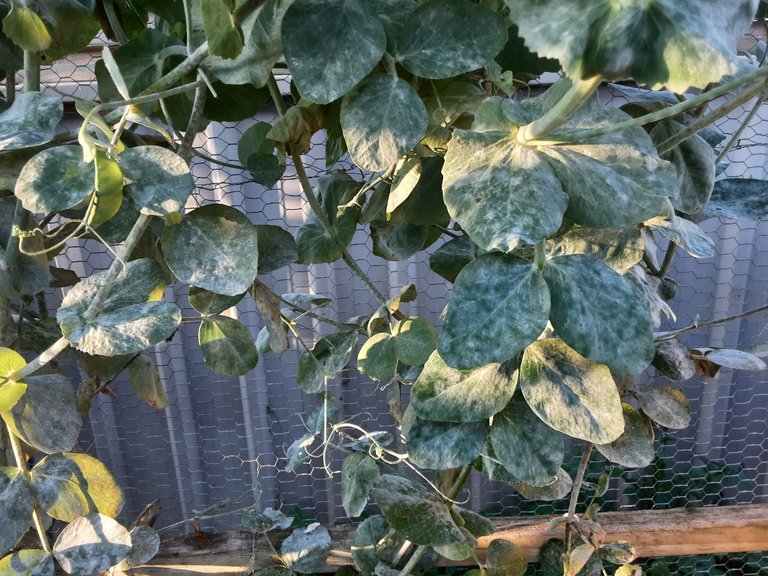
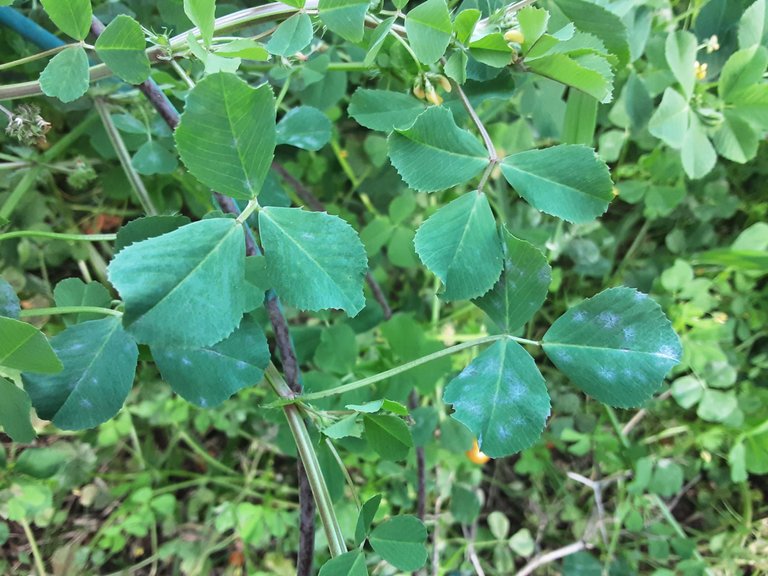
I have been spraying with a bicarbonate of soda and water mix, which worked well initially, but then a week of rain meant it would just get washed off and the mildew took advantage of that break to go wild. I'm thinking I might need to avoid growing anything susceptible to it for at least a season until the spores are no longer active.
Most of the year, the lawn we have is kept trimmed by the four rabbits, with a bit of manual edge trimming by myself, which is still for food them for when they are in for the night or the weather is too extreme for them to be outside. However, at this time of year the lawn grows faster they can eat it and I have to get the electric lawn mower out. The trimmings from that go to the chickens, because they aren't suitable for the rabbits as they are so pulped up by the mower blades they can start fermenting, which would be bad for delicate bunny digestive systems. However, they are broken down nicely enough for the chickens to eat without risking long fibres clogging their crops and they will eat, scratch and scatter all the clippings before they can start going bad.
Because the rabbits eat only fresh foods (other than the straw we get to line their cages), I'm pulling up or trimming weeds and grass every day. While this gives me my small gardening fix, it really hasn't been enough to keep things in check, as the mildew has made abundantly clear...and the weeds too. I almost wish we had the space to dry out some of this abundant rabbit food for the summer months, but I'd also still need more time to harvest it all.
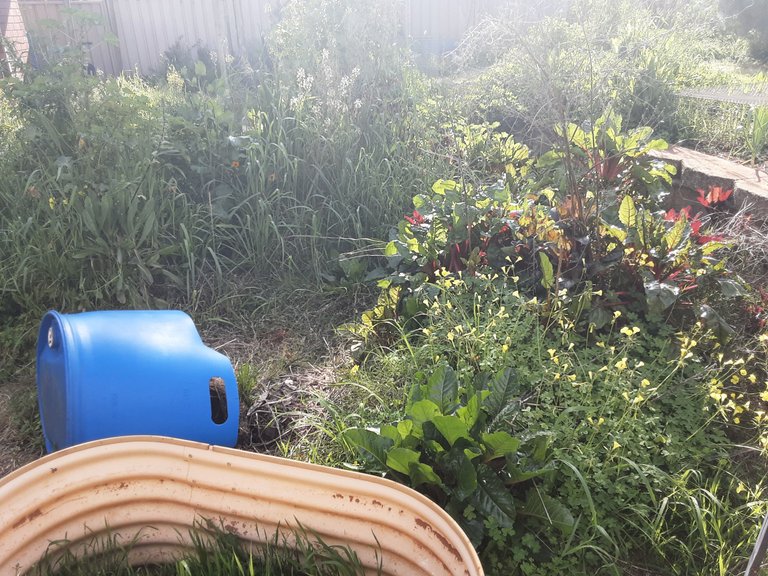
This photo pretty much sums up the garden at the moment. This area has been a dumping ground for rubbish and items we needed to move out of the way for the damaged pergola to be inspected and I've been cutting it back and uncovering stuff from the growth. Plants are at least good at looking pretty and hiding our rubbish.
I sowed some mustard seeds in the area where the root knot nematode damage was over the summer, to see if it would fumigate the soil there. I had planned to extend it through the bed, but never got that far. I thought it would be clever to plant garlic (which is unaffected by the root knot) in rows at the side of it, but grossly miscalculated how big it would get and now I can't even see the garlic to know if it's been able to grow in these conditions. I'm pretty sure some of it hasn't.
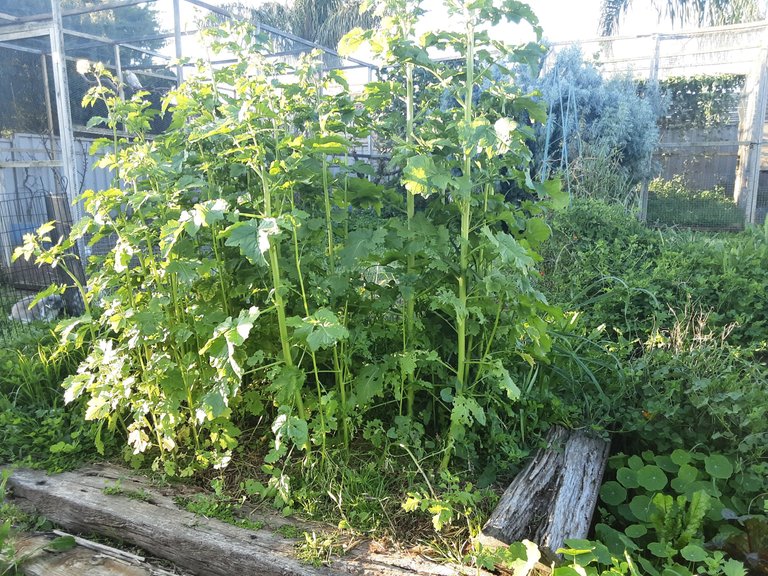
Some of these mustard plants are nearly as tall as me!
I'm not actually sure to what the best approach is at this point to get the best from it for combating the nematodes, so I've been cutting it down at the base of the stem for the rabbits and leaving the roots in for the moment. We've also been using the freshest, un-nibbled leaves ourselves. They are a nice flavour addition to salads; you can taste the mustard, but it's not spicy like the yellow sauce we normally know as mustard can be.
My experiment with bringing a couple of pepper/capsicum plants in that I'd sprouted too close to winter was a failure. They barely grew; one died inside, then I risked planting the other one out as the weather started warming up and we had a sudden cold day with heavy rain and a bit of hail. It died that day. I'm now trying to decide whether to buy a pepper and put more seeds in or just plant a Scotch Bonnet chilli plant there. Either way, I need to decide soon, because it's officially spring now.
Now I've cleared the nettles I've discovered a couple of volunteer tomato plants that have come up in a vacant run over winter.
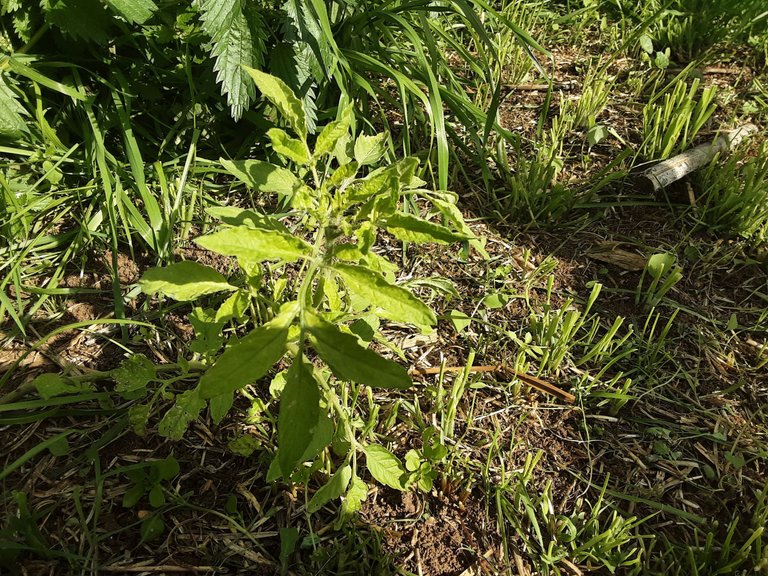
We will likely be doing work on this run to step it away from the garden boundary fence once the weather dries up a bit, so I'll need to decide on a place to move them to for the summer that doesn't have the risk of root knot.
Sadly one of our younger chickens, Blue, died recently. I feel like I may have cursed her because she was a red head, like me. Her feathers matched my hair perfectly. I'm not sure what went wrong for her. I noticed she wasn't doing very well and she was getting hassled, so I brought her out of the run during the daytimes and gave her some TLC with colloidal silver in her water. Initially she wouldn't eat, but then I managed to coax her with some greens and gradually she picked up and seemed back to her normal self, eating her usual range. She was fine for a month or two, then I noticed she wasn't eating again. This time there was nothing that could coax her back to eating and drinking and eventually she passed away.
It could have been parasite related, but I don't think so. Just after her recovery I noticed tapeworm segments on the poops of one of my other hens. I treated the whole flock at that point with a strong enough wormer to kill the worms. I don't normally like to use the more toxic wormers, but there is no shifting tapeworm without something strong. I'd used ivermectin on the flock a few weeks previously when I noticed one of the girls had a mucky bottom and found her vent smothered in mites, so I know that hadn't worked to clear the tapeworm. It's likely that a parasite load was wearing them down a bit and making them susceptible to further parasite infestation. With it being winter, they weren't laying so it was a good time to do a cleanse and make sure they were completely clear. Blue was included in this cleanse and they all seemed to be doing well. Just before the follow up dose she stopped eating again, though.
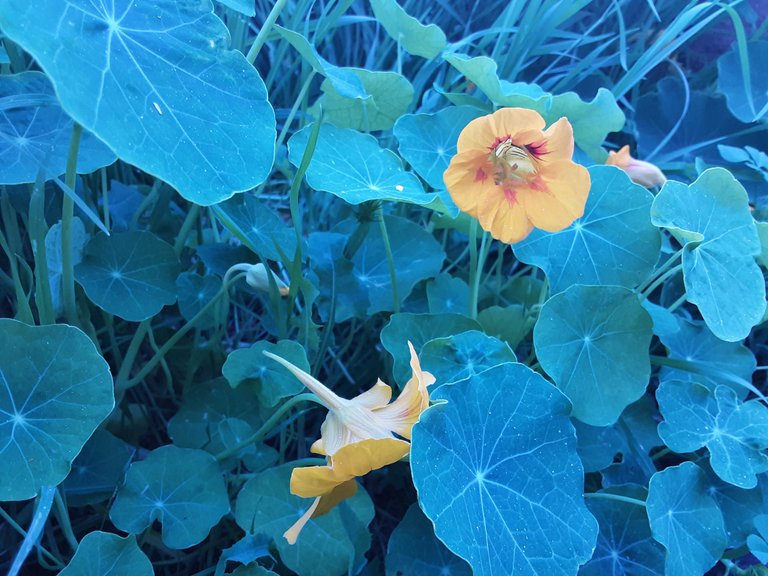
I finally managed to find something pretty in amongst all the mess!



